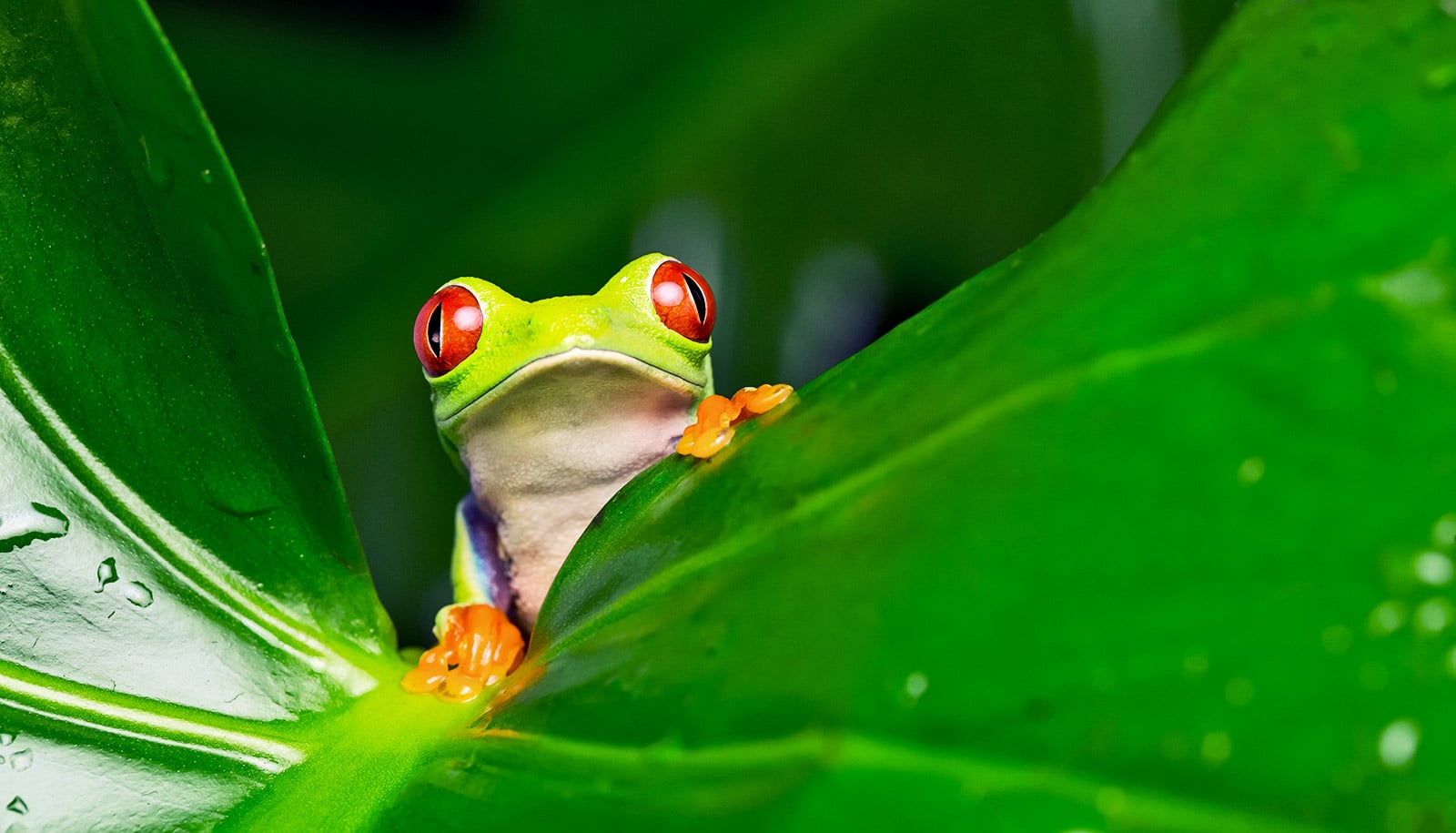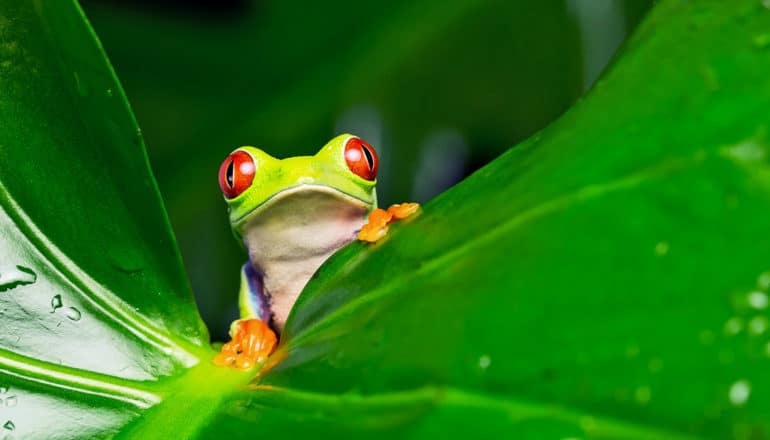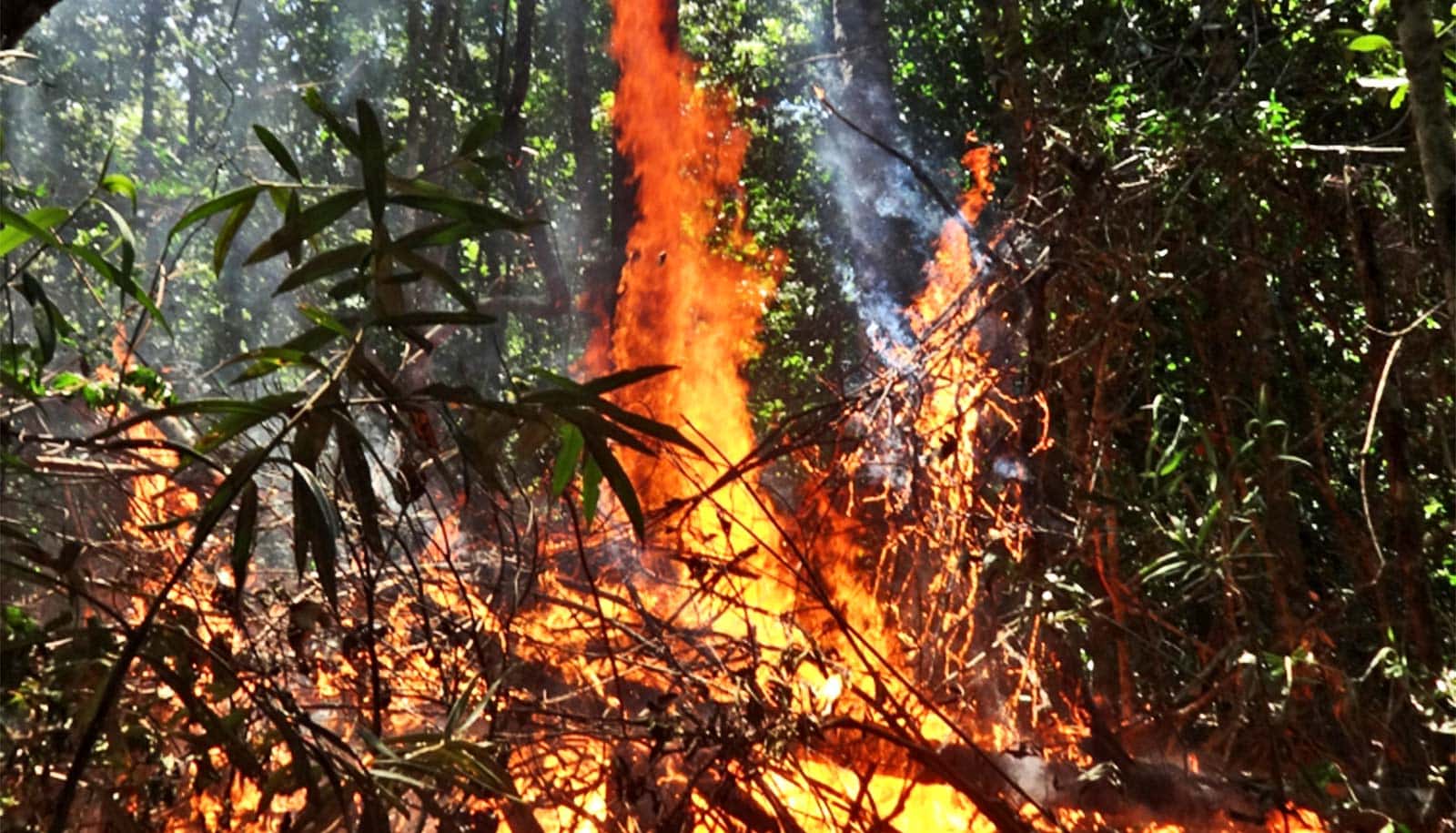
(Credit: Getty Images )
How will the Amazon deal with more severe droughts?
How the rainforest copes with drought really matters for the planet's climate.

New research digs into the Amazon rainforest’s response to droughts in order to better predict how forest growth and physiology will affect tree diversity and, ultimately, the planet’s climate.
The Amazon isn’t necessarily a place that many would associate with a drought, yet scientists project that prolonged dry spells will become more prevalent and severe because of climate change.
The question at hand is how these droughts are going to affect the rain forest, as it has a large influence on global climate and future warming.
The big picture
Due to its combination of wet forest structure and a strong dry season, the Tapajós National Forest in Brazil may be a good indicator for climate change responses, which is what led researchers to the location.
To gather information and monitor the rainforest, researchers took a detailed view of its structure by walking the ground with a lidar instrument, a tool also used in autonomous vehicles to map terrain. The lidar produced information in two-dimensional slices that describe how leaf area is structured across heights and micro-environments varying in light, temperature, and humidity.
“This is useful because the activity of a forest as a whole—its growth and exchanges of gas and energy with the atmosphere—is largely determined by how leaves are distributed in the mosaic of environments that the forest itself creates,” says Marielle Smith, a research associate in the forestry department at Michigan State University.
The researchers conducted a total of 41 monthly surveys over the course of four years, between 2010 and 2017, and included three non-drought years and one El Niño drought year.
“Through the lidar lens, we surveyed the structure of an eastern Amazon forest over several years to see how it changed in response to seasonal water stress and a strong El Niño drought,” Smith says.
The research yielded surprising results.
Sun and shade
Researchers found that the rainforest increased the amount of leaves in the highest canopy during dry seasons and drought, despite reports from previous studies that found big trees are more vulnerable to drought.
Previous satellite lidar observations have shown that when leaf amounts in the upper canopy go up, the amounts in the lower canopy go down, and vice versa, over the seasonal cycle of the Amazon forest. This could be due to seasonal variation in the amount of shading inflicted on the lower canopy by the upper.
“Our higher-resolution data allowed us to divide the forest by both height and light environments, and revealed something more complex,” Smith says.
The expectation was that when the amount of leaves in tall trees increases during the dry season it gets shadier underneath, and smaller trees lose some of their leaves as a result. However, the data showed that’s not what happened. Instead, it was the small trees that were in open areas where shading was low and sunlight high—forest “gaps”—that lost leaves. Trees that were shaded, surprisingly, added leaf area at the same time as the tall trees. The trends were the same in response to drought.
“It is key to understand that dry periods are typically sunnier periods,” Smith says. “Tall trees that also have deeper roots, giving more access to water, may take advantage of the increased light and expand their crowns. Small trees with shallow roots may be hurt more by hot, sunny conditions and contract their crowns or die. Small trees in the shade, however, may take advantage of increased light in the cooler, more humid understory.”
These results show that a tree’s response to dry periods is dependent on environmental conditions the structure of the rainforest itself imposes, the researchers say. The findings agree closely with emerging studies showing that water shortages most affect short statured vegetation, particularly in hot, high light environments.
At the same time, the research is helping build a picture of how canopy micro-environments, tree heights, seasonality, and drought come together to determine which trees will win and lose under drier climates. This is crucial to understanding the future resilience of the Amazon to climate change, the researchers say.
The research appears in the New Phytologist.
Source: Michigan State University
The post How will the Amazon deal with more severe droughts? appeared first on Futurity.
Share this article:
This article uses material from the Futurity article, and is licenced under a CC BY-SA 4.0 International License. Images, videos and audio are available under their respective licenses.


